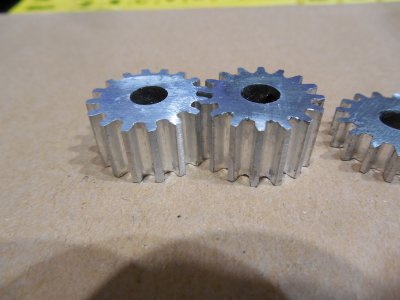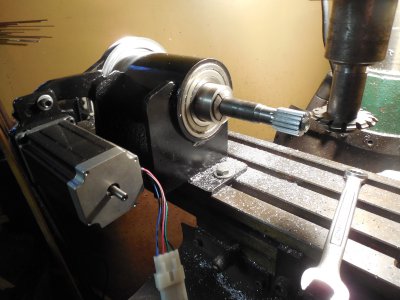- Joined
- Nov 26, 2012
- Messages
- 1,307
www.cage-gear.com ...then click on tools. Great calculators etc here.


Add to the complication; bevel gears take a whole different set of cutters than spur gears, and take at least three separate cuts with offsetting of the cutter to arrive at a finished tooth width at each end. Spur gears are quite simple to cut, for normal work, all that needs to be known is the depth of the tooth, and that is stamped on the cutter.I have that Ivan Law book, it is pretty good info. I got most of my gear cutters on ebay. usually can get them under $25.00
If you need a specific one and can't find it on ebay, ...Travers is about the only machining catalog I've found them in.
A gear cutter set is 8 cutters. I have a few sets of 8, but you will probably find that you do not often need all 8. Once you figure out what sizes of gears you need to cut you can get cutters that cut those specific sizes.
English system is DP (diametrical pitch)
Metric gears are modual
DP gears have larger teeth with a lower number. 6DP tooth is much bigger than a 14DP.
Modual gears have larger teeth with a larger number. 1 mod is much smaller than 5 mod.
If that's not confusing enough...the DP cutter numbers and the modual cutter numbers are reversed (#1 DP cutter cuts 135T-rack and a #1 modual cutter cuts 12-13 teeth same as a #8 in DP)
Lots to learn when it comes to gears. If you want to cut helical you might find that easier with a dividing head that can be tilted. You can tilt the mill head but I refuse to do that.
Add to the complication; bevel gears take a whole different set of cutters than spur gears, and take at least three separate cuts with offsetting of the cutter to arrive at a finished tooth width at each end. Spur gears are quite simple to cut, for normal work, all that needs to be known is the depth of the tooth, and that is stamped on the cutter.
I assume that they are still in business, and they have EVERYTHING in the way of gear cutters, that is Ash Gear Company; they are located in the Eastern USA.
So far as helical gears are concerned, it is not tilt of the dividing head that is required, but an angular feed of the table, wherein the table of the (universal milling machine or other such homemade fixture) is swiveled to the spiral angle of the gear teeth
Good Morning,
i ordered a mill the other day so now I'm shopping for tooling.
the one thing I can't seem to find on Enco is the tooling I need for cutting gears. I don't know enough about it yet to even put in the right search criteria.
I'm looking for the arbor and cutters to make small bevel and spur/pinion sets. I ultimately want to try making some differentials and transfer cases for my RC construction equipment. From my reading here and elsewhere I thought I would find a set of cutters and an arbor. What else would I need to get started. Sorry for the noob question, it's okay if you roll your eyes!
thanks
jim
